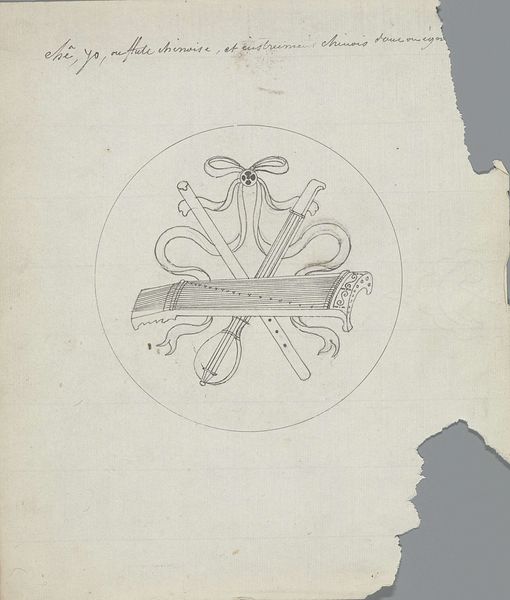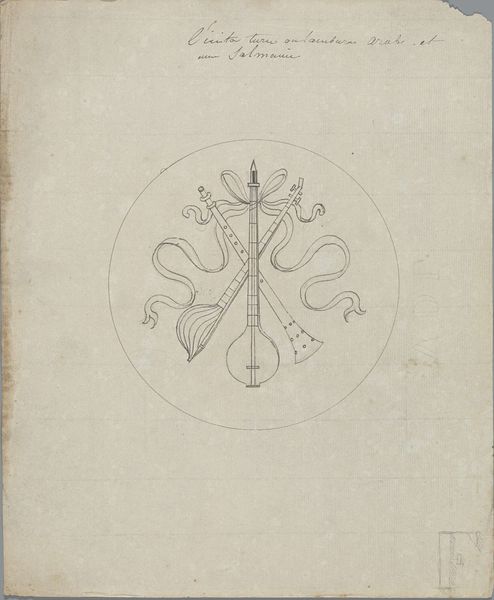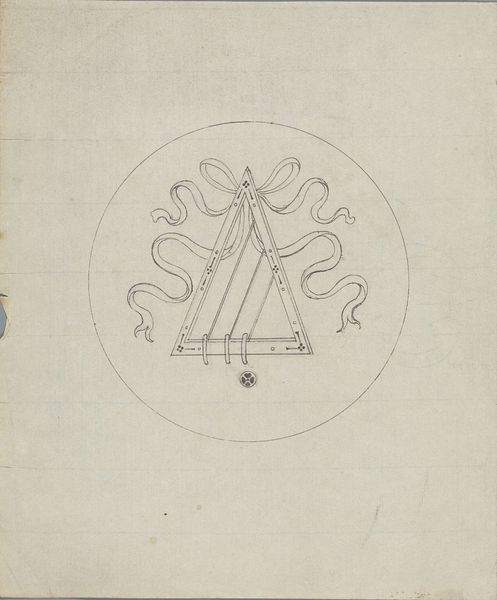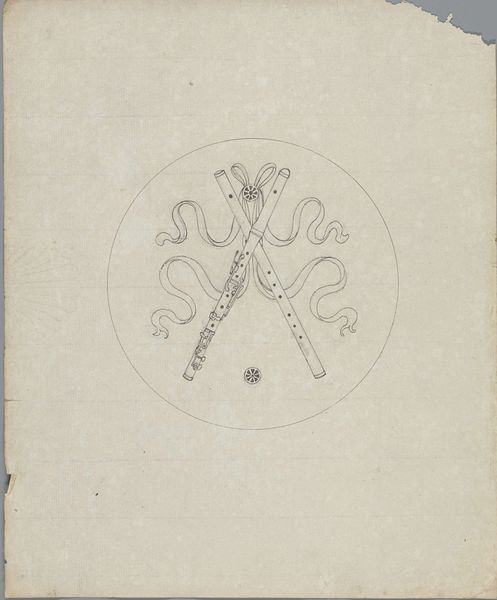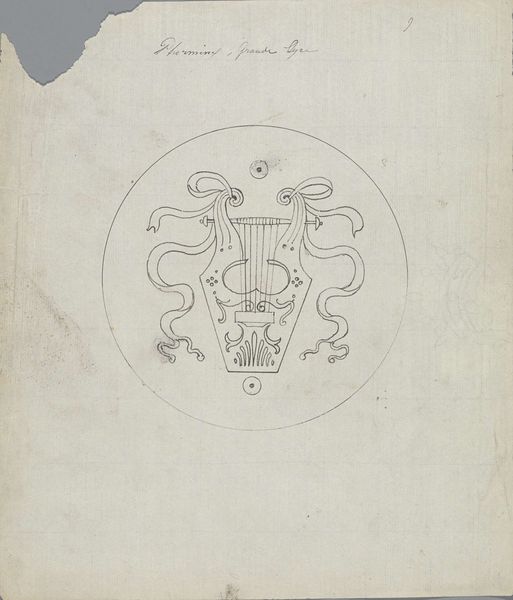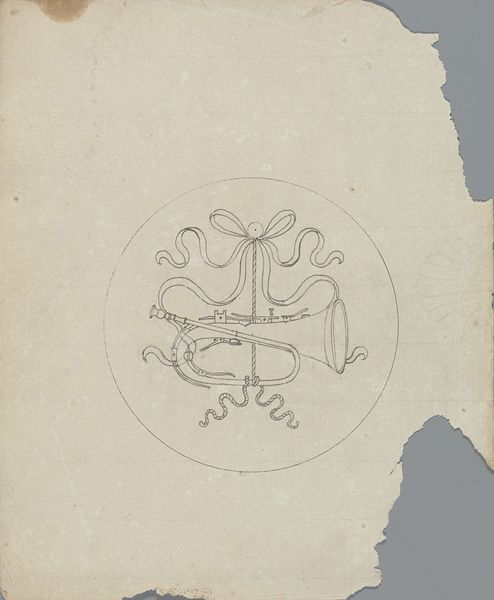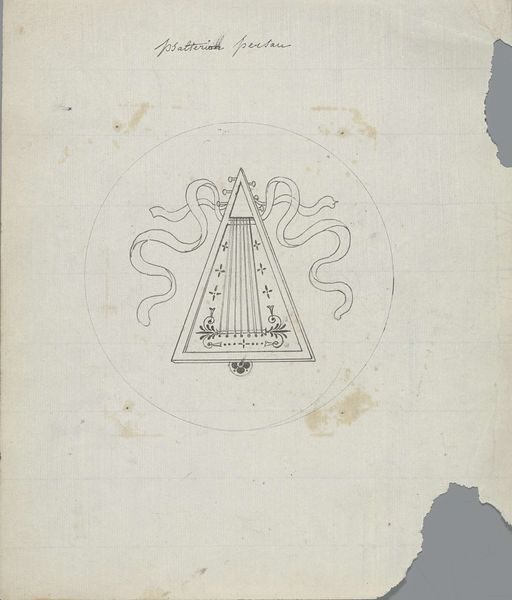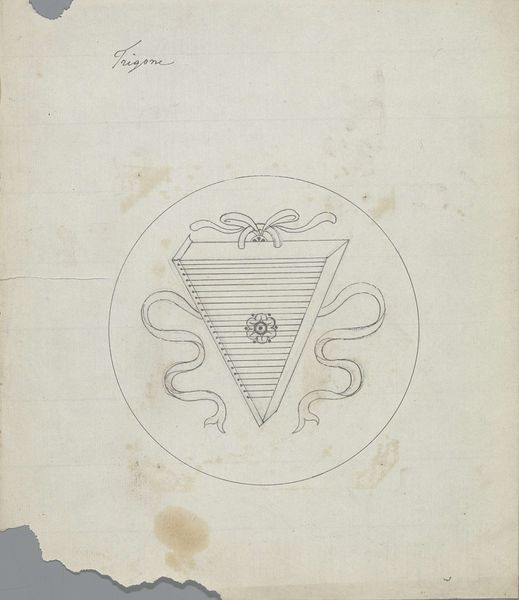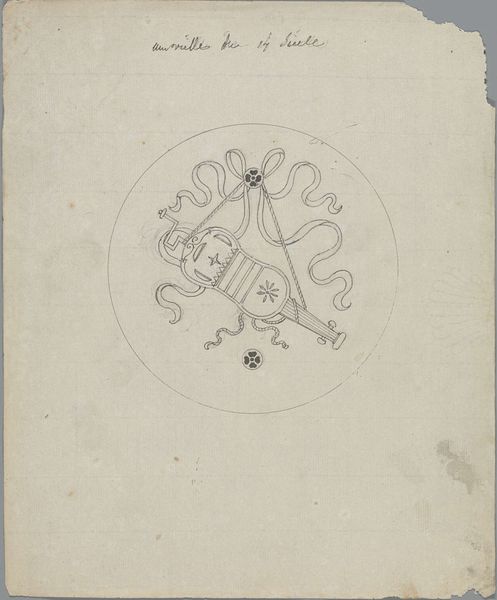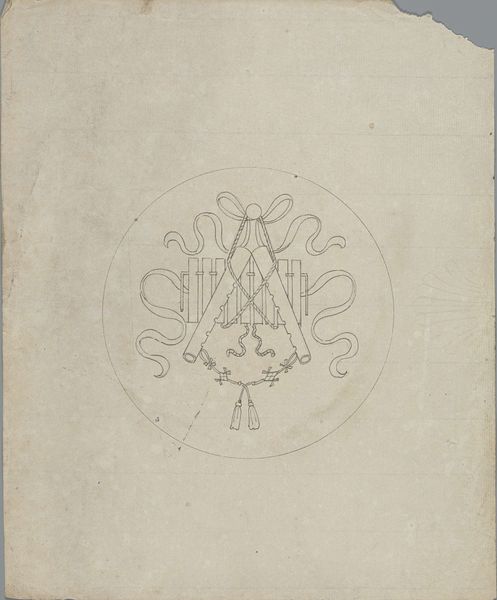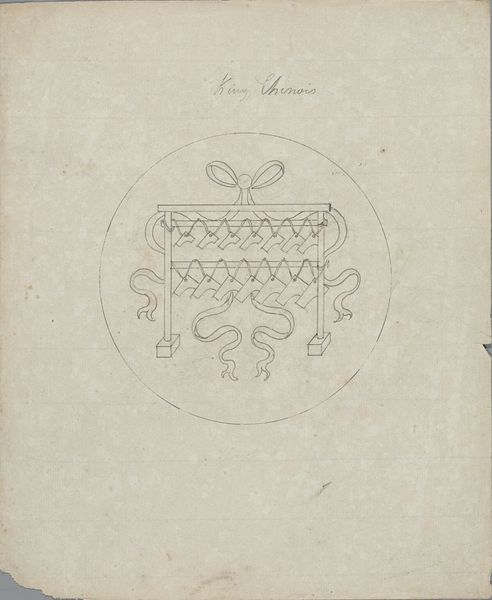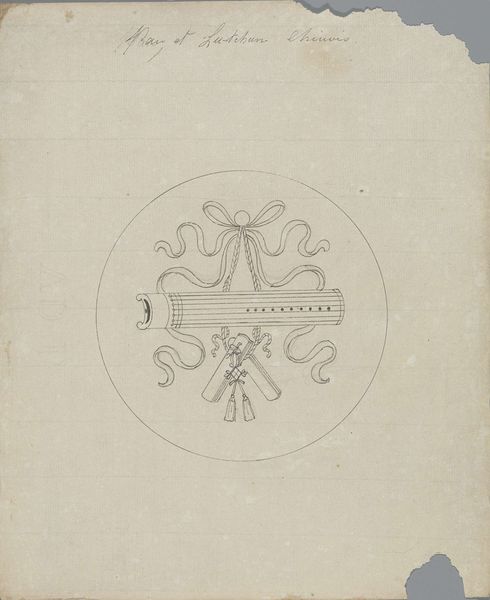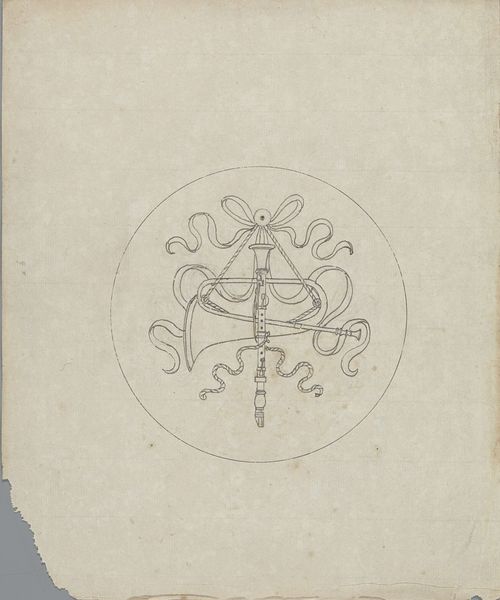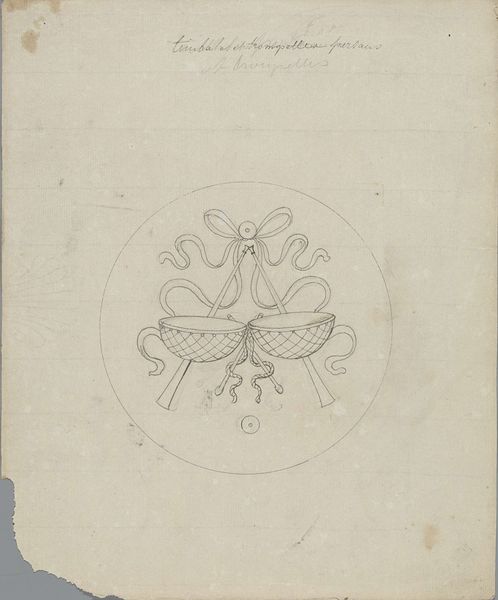
drawing, paper, ink
#
drawing
#
paper
#
ink
#
geometric
#
orientalism
#
line
Dimensions: height 253 mm, width 208 mm, diameter 123 mm
Copyright: Rijks Museum: Open Domain
Curator: What a delicate drawing. This piece, created before 1828 by Pierre Félix van Doren, is entitled "Kin, Pa-fou et Tchi chinois." It's ink on paper. Editor: My immediate thought is that the imagery looks like a family crest of some kind—very formal and composed, almost like musical instruments arranged in a heraldic display. The paper gives the sense of something really old, fragile. Curator: That's a perceptive take. Van Doren’s work exemplifies Orientalism, a European fascination with the East, manifested through art. This drawing showcases stylized Chinese instruments rendered with precision, in a linear fashion. Considering this within art institutions it underscores the way exoticism shaped artistic styles and informed collection practices. Editor: Seeing those particular instruments—the kin, pa-fou and tchi – arranged so deliberately suggests that they represent something beyond just their literal sound. Musical instruments often signify harmony, cultural identity, or perhaps, in this case, an imagined or romanticized Orient. I wonder if there's some implied narrative here tied to European perceptions of Chinese culture? Curator: Indeed, the "chinoiserie" movement was deeply ingrained, and representations such as this were both anthropological observations and artistic fantasies that met European tastes for exotic themes. Also note how presentation and display were significant features that encouraged orientalist works to fit comfortably in aristocratic settings, reflecting ideas that legitimized existing Western structures of domination in art markets and public views. Editor: The geometric layout is intriguing—it creates a sense of balance but also constraint. All this detail packed inside a perfect circle reminds me how symbols can be carefully constructed and controlled to carry precise cultural or political meanings. Even the ribbons and what looks like ceremonial adornments play a role, tying it back to notions of performance and visual messaging from that historical context. Curator: Right. Understanding the context of colonialism is crucial here. This work likely reinforced specific ideologies for its original audience, solidifying impressions of the East through highly curated visuals for the gaze of Europeans. Editor: Thinking about cultural memory, it is interesting that an image designed with the objective of portraying instruments in an exact, stylized way carries with it an inadvertent, perhaps more forceful impression: How people viewed other cultures back then—how a sense of “Chinois” was created in artistic renderings for generations onward, too. Curator: Absolutely, this has really given me something to think about, seeing it again now! Editor: I will listen more attentively now the next time these instruments show up in Asian art.
Comments
No comments
Be the first to comment and join the conversation on the ultimate creative platform.
